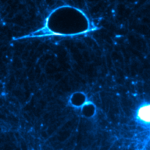Link to Pubmed [PMID] – 28106761
Toxins (Basel) 2017 Jan;9(1)
Botulinum neurotoxins are diverse proteins. They are currently represented by at least seven serotypes and more than 40 subtypes. New clostridial strains that produce novel neurotoxin variants are being identified with increasing frequency, which presents challenges when organizing the nomenclature surrounding these neurotoxins. Worldwide, researchers are faced with the possibility that toxins having identical sequences may be given different designations or novel toxins having unique sequences may be given the same designations on publication. In order to minimize these problems, an ad hoc committee consisting of over 20 researchers in the field of botulinum neurotoxin research was convened to discuss the clarification of the issues involved in botulinum neurotoxin nomenclature. This publication presents a historical overview of the issues and provides guidelines for botulinum neurotoxin subtype nomenclature in the future.

